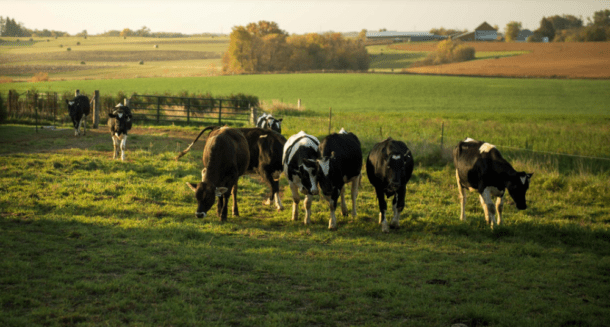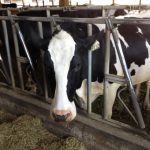
“It’s time to move. It’s time to put risk management in place,” said Marin Bozic, an economist at the University of Minnesota.
Bozic, who developed the insurance program with the American Farm Bureau Federation, spoke Dec. 1 in a webinar presented by Farm Credit East.
Dairy Revenue Protection is designed to insure against unexpected declines in the quarterly revenue from milk sales relative to a guaranteed coverage level.
Nearly one-third of the milk in California, Idaho and Wisconsin is covered by the program; it’s 54% in Texas and 70% in South Dakota.
By contrast, only 12% of New York milk is covered, 11% in Vermont and 6% in Pennsylvania.
Participation may be low because the Northeast has a lot of small farms, which may get by just fine with Dairy Margin Coverage. That USDA risk management program offers reduced rates for the first 5 million pounds of milk, making it a good deal for farms with 200 to 250 cows.
Still, Dairy Revenue Protection can be used in conjunction with Dairy Margin Coverage, and the additional protection may help the farm in the long run.
“If we have a collapse of cheese prices, who do you think is going to balance the market? Is it going to be Texas or New York?” Bozic said.
At the popular 95% coverage level, farmers will get $170 to $180 in income over time for every $100 spent on premiums, he said.
For a budget of 35 cents per hundredweight, net income will increase by 27 cents.
“That’s an excellent return on investment,” Bozic said.
During some quarters, farms that didn’t buy coverage might think they have outsmarted those who spent money for premiums and didn’t get an indemnity.
But the next time prices fall, Bozic said, the government might not create a special program to help dairy farmers as it has during the trade wars and pandemic.
A strong risk management plan will also build a farm’s favor with its lender.
“It’s high time to get involved,” he said. “It’s almost not optional any more. Ten years from today, those of you who listened to me will still be in business. Those that don’t, I hope you’ll stay in business, but I would be hard-pressed to say that your success is guaranteed because your competitors will be ahead of you in risk management. They will be better protected if prices drop.”
To use Dairy Revenue Protection effectively, Bozic suggested farmers buy coverage for the fiscal quarters that are farthest in the future.
With prices likely to fall in the first two quarters of 2021, farmers should start layering in coverage for the second half of the year as well.
“Cover quarters before a crisis comes,” Bozic said.
Bozic recommended that farmers not but mixed-class endorsements because there’s no guarantee that Class III and IV prices will move together as tightly as they have in the past.
























